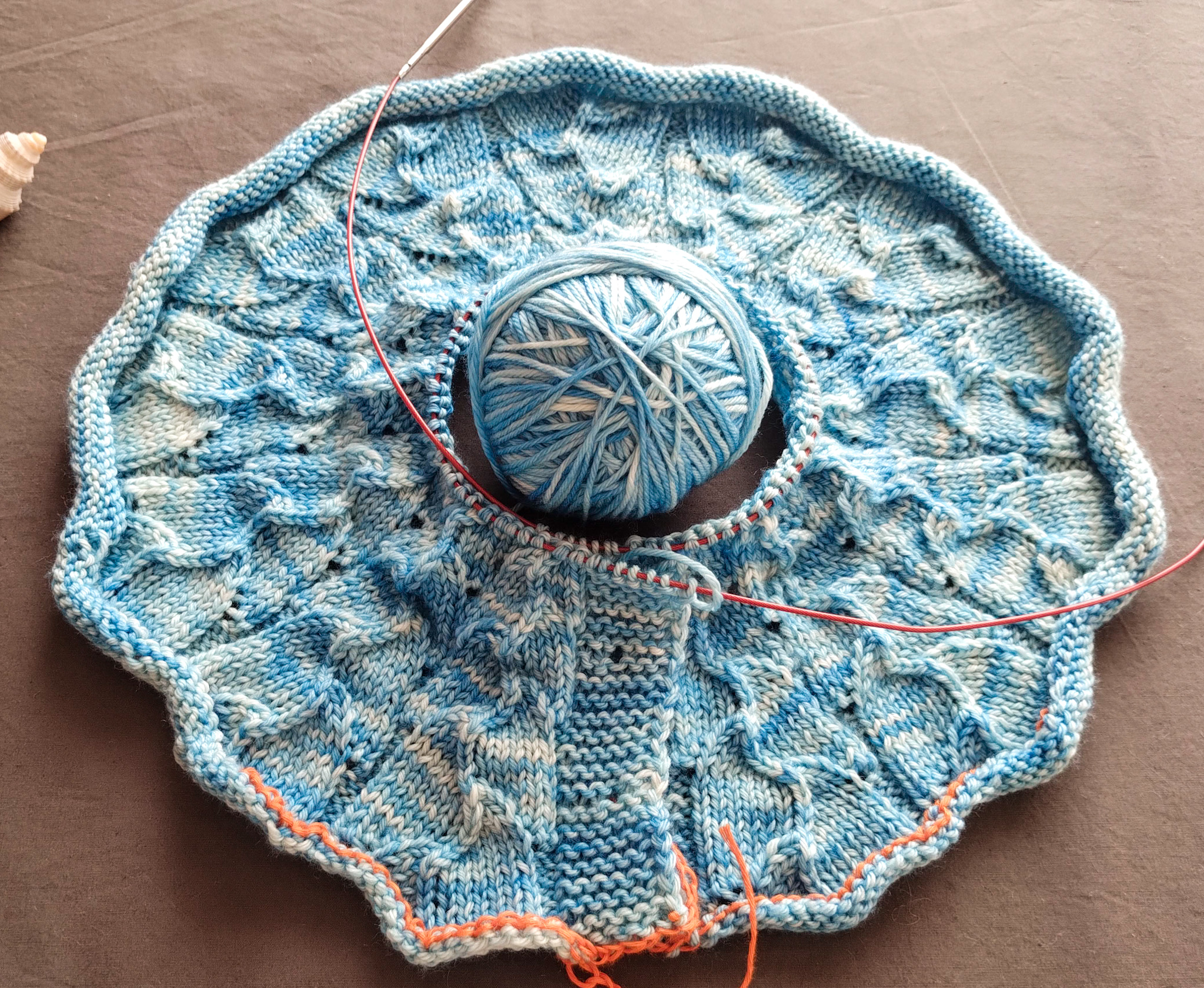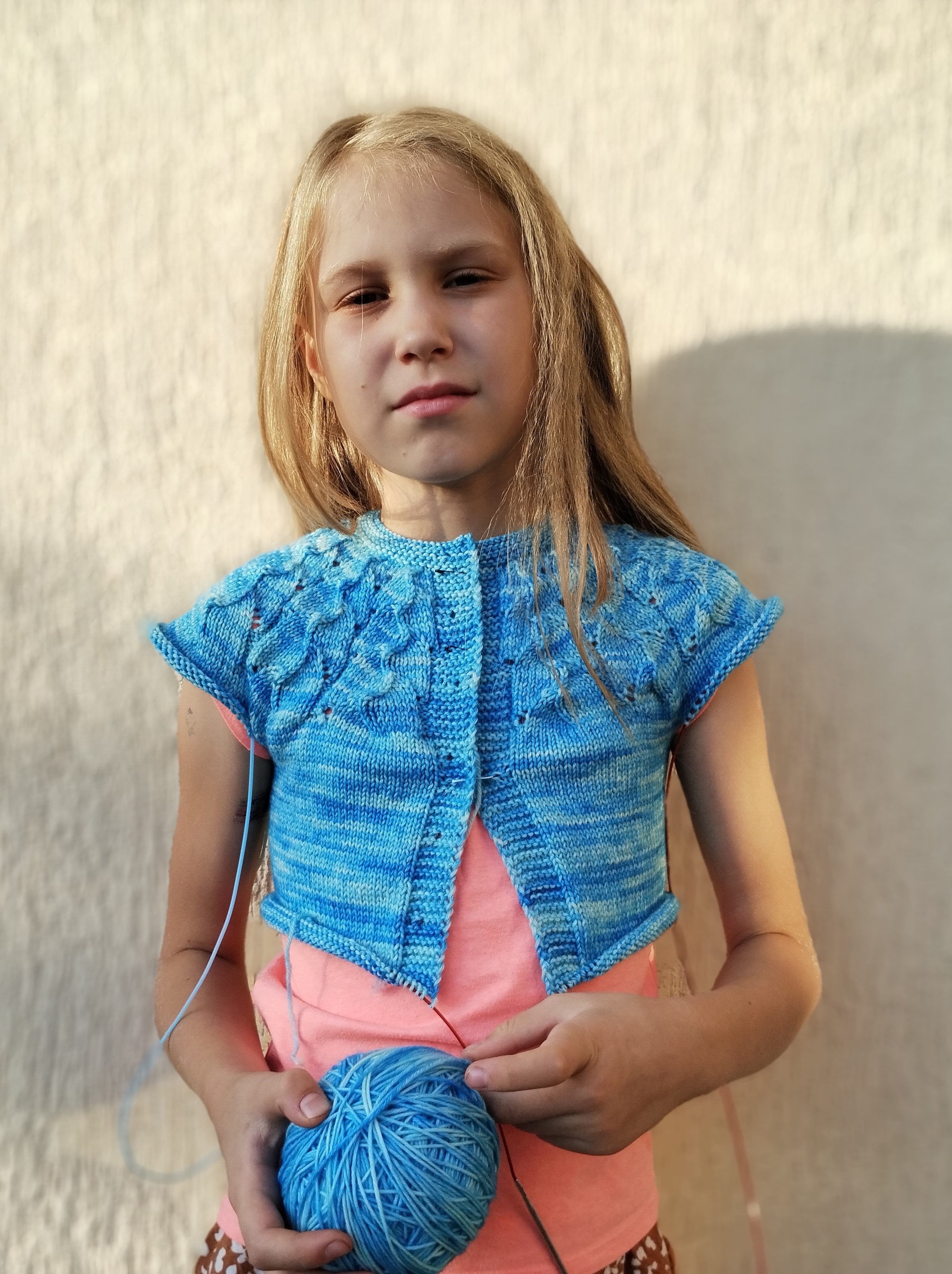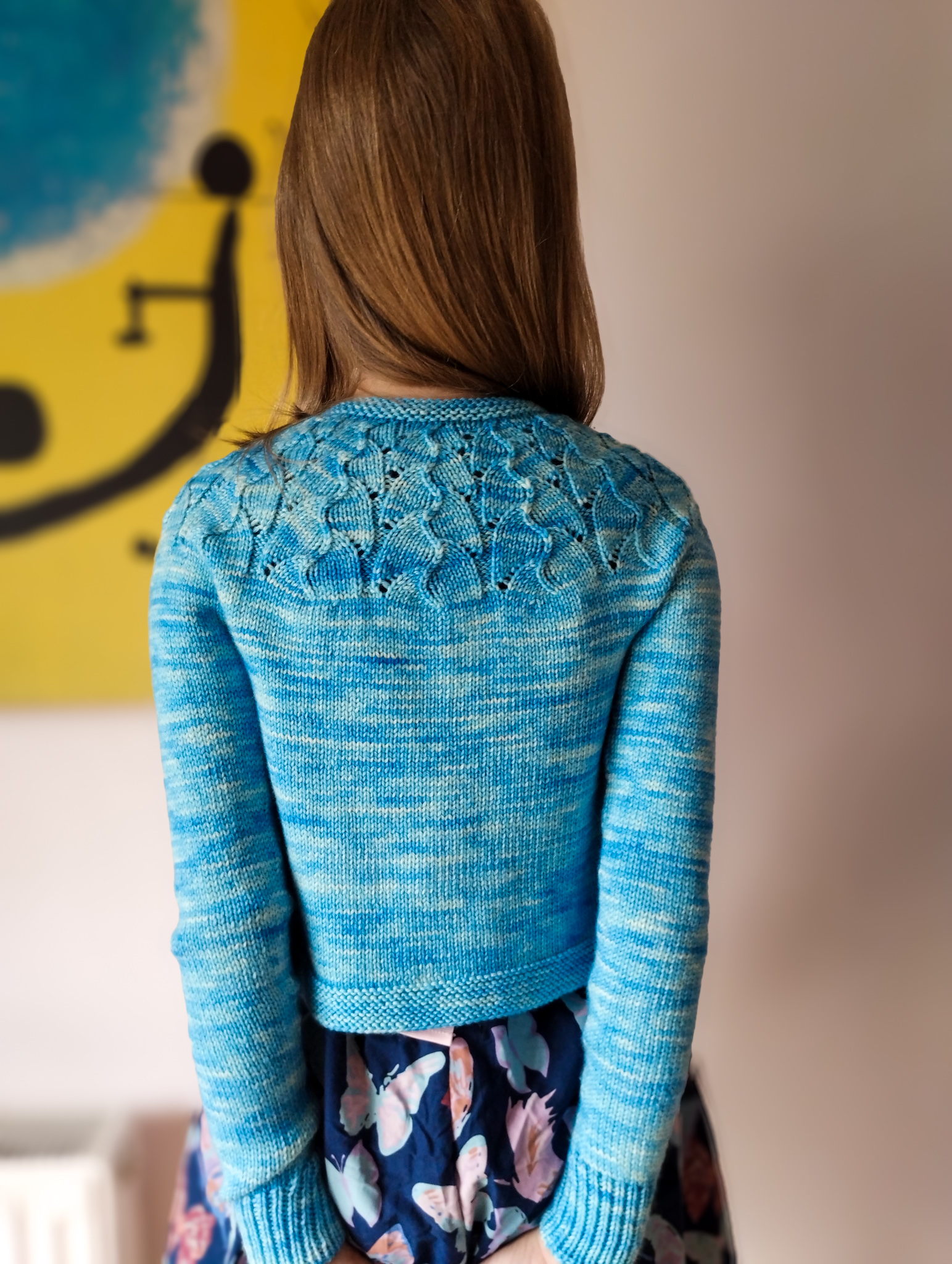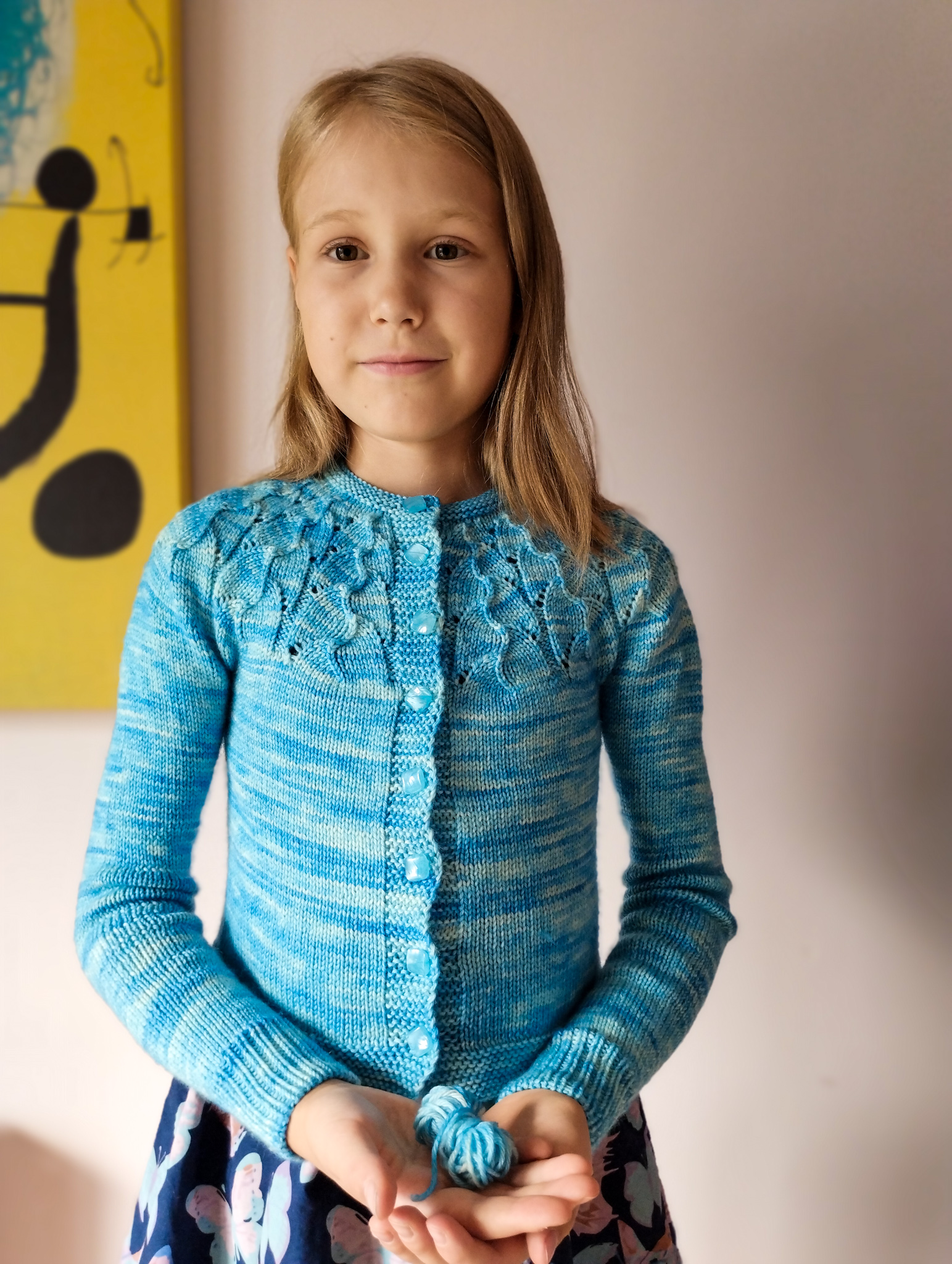Can bottom-up pattern be knitted with limited yarn?
It’s been a while since I wrote my last blog post but I had an experiment worth documenting. I had to find out for myself is it possible to make a bottom-up garment with limited amount of yarn? Want to find out too?
Problem statement
Given:
- lanky and slim 9 years old who is very particular about her likings (aren’t they all at that age? :) )
- my own pattern for All the smallest brooks cardigan stating that cardigan for size “8 years”
needs about 750 m / 815 yds and for size “10 years” 780 m / 860 yds - only 2 skeins available of Maruma hand dyed Merino Sport in color chosen by future wearer (in total ~ 524 m / 573 yds)
- the pattern written for bottom-up construction, meaning that you cannot easily end the knitting as soon as yarn ends.
Can the cardigan indeed be made? Let the experiment begin!
The plan
- We measured my daugher’s chest circumference and as she is very slim she would do with size “7 years” if no ease is required (and not that we could afford much ease in this case). So, that the size I was using for guidance.
- The easiest way to knit garments when yarn is limited is top down, so I decided to adjust the pattern instructions for that as needed
- The reason why this particular cardigan has bottom-up construction is the lace yoke, that still has to be made bottom-up not to complicate matters overly
- I would knit the cardigan in following sequence then
- Lace yoke - bottom-up as instructions state
- Sleeves from top to bottom - recalculating and adjusting a bit not only for age difference (9 instead of 7) but also for longer than standard arms (family trait)
- Remaining yarn would go to body worked from top down, as long as the yarn remain.
- The cardigan has two types of edges: garter and 1x1 ribbing. In any other cases for older kids I rarely use garter edges, I preferred them when kids where smaller, but I will use garter edge this time. Changing knitting directions is usually visible at the edges (at least in my knitting) and garter stitch would help me hide the transition point.
How did I do it?
 Almost finished yoke, you can see provisional cast-on with orange yarn
Almost finished yoke, you can see provisional cast-on with orange yarn
To work the yoke bottom up
- I cast on using provisional cast-on the number of stitches at the widest yoke point: 244 stitches according to the pattern
- I worked the Short rows to elevate the back as stated and then the yoke according to the main instructions with small exceptions:
- I omitted yarn over in Row 45 of the chart, making the neckline closer
- After the yoke was done, I unraveled the provisional cast-on and placed the stitches on the needles
- Remember: the other direction usually has 1 stitch less, I chose to ignore that and “took” it from back stitches when dividing the yoke later
- I worked some rows more to adjust the yoke for the wearer, making it longer than graded for chosen size
 First fit check - not bad, but hopefully blocking will give some ease!
First fit check - not bad, but hopefully blocking will give some ease!
- Next, I divided the body and sleeves, according to the pattern (except, giving the back 1 st more to account for the missing st from provisional cast-on)
- I did some recalculating of sleeve decreases based on the sleeve length needed and ended up with decreasing each 11th round for 9 full decreases (instead of increases as pattern instructions suggest)
- I ended sleeves with the usual 1x1 ribbing and Tubular bind-off
 Finished and blocked - view from the back
Finished and blocked - view from the back
Then, I worked the body until I felt that yarn will soon run out. At that point I worked the garter ending (1 or 2 rows more than pattern states just so I use the yarn to the maximum) and only a little yarn remains - for any potential darning needed in the future.
Lastly, some buttons sewing (I’m not a big fan of this step), blocking and voila - happy wearer!
 Finished and blocked - view from the front
Finished and blocked - view from the front
Consclusions
- I was only able to pull this experiment off because I have quite slim kid, otherwise, the cardigan would be just too cropped!
- Also, at the rate they are growing at this age, it will not fit long and she will outgrow it very fast as there is no additional reserve for growth.
- Hanna is happy, so am I as I was not sure that it is even possible, the difference in yardage I had and requirements is just so big!
- I could gain some ease if I would took a needle size bigger than needed for the gauge (but not much bigger so the fabric wouldn’t be too loose)
- The whole affair has also given me chance to look into the pattern, discover that I outgrown the style (as it was my first garment graded) so I’m regrading it and will republish it in some foreseable future.
